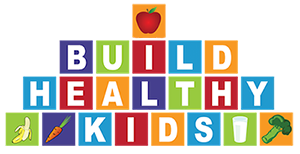| |

The
Basics Made Simple
Daily
Nutrition Guide
Getting
Started, An Assessment
Perfect
Serving Sizes
Choosing
Healthy Food
 Tips
for Good Eating Tips
for Good Eating
|
|
Tips for
Good Eating

How do you
encourage your child to eat healthy food?
The easiest and best way to encourage your
child to eat a diet full of healthy food, (fruits, vegetables,
whole grain and low fat meat and milk), is to eat one yourself
and begin with them as soon as they start eating solids and
continue for years to come.
 Most, if not all, babies begin by loving pureed fruits and
vegetables. It is only when we start offering processed food
full of sugar, salt and artificial flavors that they no longer
want to eat the healthy options.
Most, if not all, babies begin by loving pureed fruits and
vegetables. It is only when we start offering processed food
full of sugar, salt and artificial flavors that they no longer
want to eat the healthy options.
If you continue only offering great healthy food, they will
continue to eat it. It is tough to compete with food that
has been designed to be addictive.
Food scientists work very hard figuring out what to put into
food so that you will eat more of it. Adding both sugar and
salt to a food will encourage eating beyond fullness.
For example, did you know that some cereals have more salt
than chips, and crackers have a lot of sugar in them? Your
child probably wouldn’t eat as much if these snacks
didn’t have the added salt or sugar.
If your child has already turned into a picky eater, eating
only chicken nuggets, chips, candy, processed crackers, white
bread, sugar cereals and microwavable prepackaged meals, realize
that they became picky because of the addictive nature of
these foods and because they were given to them as a food
choice.
In studies done with rats, if rats were given only their rat
chow to eat, they remained at a healthy weight and did not
overeat. However, when their diet was changed to one full
of junk food like the typical American diet, they ate to the
point of severe obesity. They no longer were able to control
their intake. The same thing can happen to us and to our children
when offered junk food.
We know that with your busy schedule, getting
your child to eat better and be active enough can sometimes
be stressful and frustrating for both you and your child.
A popular prescription for the past several decades has been,
“You provide the what and where and your child decides
if and how much food they will eat.” This technique
works in a world where the only options are healthy ones but
that is not the world that we live in.
Most children will eat the carbohydrate offered first, go
back for more, may be eat the protein if it is breaded or
dipped in a sweet sauce, and rarely the fruit and vegetable.
Children have been given complete control over the food they
will and will not eat to the point where they select only
processed foods and end up overeating them.
Children do need a say in what they eat, but that should never
be more important than the structure around eating a healthy
diet. You would never put your child in charge of bedtime
by offering them a bed and saying when and if they are ready,
they can go to sleep.
They need to be taught good sleeping habits. They also need
to be taught good eating habits every day for many years,
especially during those times when they exert their independence,
such as during the terrible two’s and when they are
starting school.
As a mom or dad, it is your responsibility to provide your
child with the healthiest food. Your child will decide if
he or she is going to eat, and how much. But there is a big
BUT in there. If they do not eat the healthy options, do not
offer other unhealthful options or more of the grains without
finishing the vegetables first.
|
|
 |
 |
 |
| |
Only have healthful alternatives in the house; If
the junk food is not there, they cannot eat it.
Install consequences; For instance, dessert is not
an option unless vegetables have been eaten.
Continue to offer healthy varieties as it may take
10-12 tries until a new food is liked.
Do not make it a battle, but be firm. Children will
eat when hungry.
Offer smaller portions at first so that your child
can feel like he/she accomplished something.
Remember that you
are teaching them habits for life so get them involved
in the selection, preparation, cooking and serving
of food. |
|
|
 |
 |
 |
 |
Tips
|
 |
|
|

